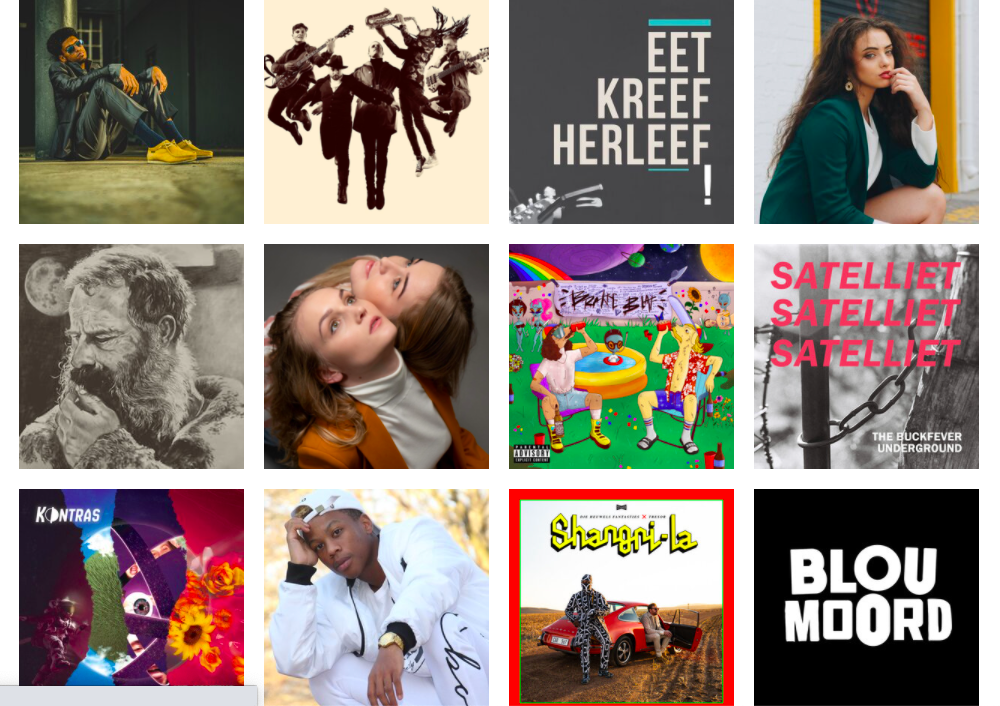Ons Kerk se Mense

PIETER UYS
Various Artists
OneF1015
Distributed with Ons Klyntji magazine dated November 2007
FULL DISCLOSURE: The reviewer collaborates on three of these 22 tracks and will therefore make no value judgments on the content or his own vocals but will restrict his comments to the inputs of his partners. More than seven years down the line, this extraordinary compilation has garnered only one online review. The reviewer-contributor is thus compelled to reveal the neglected rarity’s treasures & travesties.
Ons Kerk Se Mense (The Members of our Congregation or literally, Our Church’s People) was compiled by Drikus Barnard of the bands Slow, Brixton, Moord & Roof, Plank & Trike. Nine or ten of these were recorded and produced at his Lekkerrus Studios. (Mystery surrounds track 22). Paul Riekert of OneF Records produced 4 of them and mastered the album.
Acts with more than one contribution include Buckfever Underground (2), Insek (2) and Drikus (under the moniker Brixton Barnard and with Slow). Recorded in 2000, Slow’s Krismiswurm is the oldest as it would appear that all the others were recorded in either 2006 or 2007. Spoken poetry/prose comprises approximately one third of the work although some tracks straddle genres. Besides numbers 1 and 21 which are in English, the rest is Afrikaans through and through.
PART 1
Slow’s edgy Krismiswurm opens with sampled male & female voices before the guitars & drums kick in. The complex arrangement encompasses shifting tempos, innovative guitar work and startling bursts of percussion over and around which Drikus steers his acerbic social commentary.
Both of Buckfever Underground’s contributions come from their album The Buckfever Underground SAVES. Over a mix of what sounds like sax, cymbals, guitar, drums and drones, the first offering Psalms en Gesange (Psalms & Hymns) praises inter alia airmail, e-mail, roadblocks, alcohol abuse, community service, national parks, simplicity, various vehicles, giving birth, painkillers, the ability to urinate, the dreams of a child, a bank balance, seekers that find, strategic retreats and fellatio.
That wild parade emerges after the slow, ominous intro that lists a series of “iconic” politico-religious figures; the pace picks up for the praises that are interspersed with off-the-cuff observations. Finally the tempo winds down in a loop-like repetition of the jubilations alone.
A burst of textured feedback unleashes the only English song, I Want To Die On A Tuesday Afternoon. This passionate rant’s up-tempo beat supports the swirls and shapes summoned up by massed guitars, surging synths and sundry chimes, hums & buzzes.
Insek’s first track is the brief instrumental called Derrick on which trumpet-dominant segments alternate with screaming guitars & sax-like sounds. The maniacal Terug Van Die Dood (Back From The Dead) combines bellowed vocals & shrieks with 200bpm industrial beats.
Phew! In the name of sanity, let’s turn to the more conventional structures of the singer-songwriters. Ironically, Piet Planter’s blend of brooding vocals and jangling guitar deals with insanity (Niemand By Die Huis). A choir of electronic crickets at first subtly insinuates itself into the rich full sound, progressively infiltrates the matrix and finally fragments the psyche as it triumphs in the mix.
An interplay of symphonic synths and stirring guitar give rise to the beautiful autumnal tones of Bacchus Nel’s Ballade Van Die Vrou Wat Te Lank Alleen Gebly Het (Ballad Of The Woman Who Stayed On Her Own Too Long). His rich tenor narrates a tale of woe, something like Eleanor Rigby’s Afrikaans aunty who dwelt on a farm in the Karoo.
The third singer-songwriter (second in the segue after Bacchus) is Bittervrug with Ek Sien Jou In My Drome (I See You In My Dreams). Alas, the mood lifts not… grieving guitar embraces solemn orchestral sounds while a funereal beat provides the perfect backdrop for Charles’ anguished vocals as they spiral ever deeper into despair.
Feeling suicidal? Let’s jump 5 tracks for the love of life! Brixton Barnard saves the day with a Ween-like faux country send-up of 1970s country queen Barbara Ray. Not exactly humorous either, the song serenades the chanteuse within a framework of bitter irony, dark humor and apocalyptic imagery.
By now, Angst starts sinking its claws into my soul so I skip Moord Greeff’s Ballas for Monster Soek Sy Meester (Monster Seeks Its Master) by Willem Welsyn en die Sunrise Toffies. At least this one has chugging, buoyant rhythms, roaring guitars and soaring vocals. The music brings brief respite but the lyrics relentlessly push the mutant.
Jeez, dudes … feed me Effexor, Elavil, Prozac.
Singer-songwriter Roof Bezuidenhout’s tender Afrika Wat Wag (Africa Which Awaits) offers elegant melancholia in its acoustic simplicity which is atmospherically enhanced by the odd strategic bleep, exquisite percussive infusions plus some whirring effects that embellish the outro.
OK, bring on the poets then!
The double-tracked vocals (normal & delay) of Esmé Eva Kwaad’s tone poem The Heaviest Red create an echo that’s reinforced by the reference to “echoes of memories”. Conventional time evaporates as the voices spirit us into a dreamtime inseparable from the setting. Timelessness and disintegration exist and occur simultaneously: “nothing’s happening at all” versus “the ache is so beautiful it makes me tick.” The spooky superstructure, the sense of foreboding, rests on a bedrock of resignation. This juxtaposition of the sinister and the soothing resembles the unsettling yet hypnotic effect of the lullaby. Tick-tock percussion joins the eerie background rumble on the line “the clock is only correct twice a day.” Following the last word of the final line “and the sky drips the heaviest reds” this beat speeds up till the single ring of a bell swallows it.
Accompanied by church organ, Esmé Eva Kwaad delivers an equally other-worldly rendition of Ben Jonson’s “Song To Celia” (Drink To Me Only With Thine Eyes) as introduction to the collaboration with Piet Pompies whose spoken vocal commences after her final note has faded, narrating a nightmare over the organ tune (no pun intended).
Filthy but fun! Dit Was Immers 1 January exhibits Paul Riekert’s scatological musings on the word “turd.” Claiming that women will go to any length to avoid using it, he examines the synonyms & circumlocutions and then narrates an encounter with the only woman who had ever articulated the word in his presence. On Retha Vermeulen’s lips it became a “bon mot,” expressed with conviction at just the right moment. Well, that’s what Miranda claimed in the movie Picnic At Hanging Rock: “Everything happens at exactly the right place and time.”
PART 2
Drumbeats and a percolating keyboard line introduces Kokaïnekop Kosie by Nul before an analogue synth and guitars join the fray for the story of Kosie who snorted substances to excess, narrated in a type of rap. A beautiful symphonic instrumental break is followed by a slower recitation, very atmospheric, then it reverts to the faster tempo. May Kosie’s disastrous experience serve as warning to us all. I like this track.
Die Kaalkop Waarheid by Stean en die Crankshafts blends guitars, cello and drums in an innovative way. This slow rock ballad has impressive bursts of guitar, poetic lyrics and major vocal variation, from the tender to the anguished, but it’s over before you know it.
Kabous Verwoed’s Sunnyside Hotel portrays urban Pretoria in a series of vivid vignettes of people & places in a voice that ricochets between indifference and empathy. The musical backing suits his narration like a Rizla around quality Omkyktwak. This is Beat Poetry at its best.
More traditional, Ronel Nel’s poem Elope is no less striking and memorable. Her recital is likewise enhanced by cinematic sounds and evocative samples in the right places.
Background voices in a foreign language – sounds like Western Slavic/Polish? to me – that weave over & under his narration lend a strange air to Moord Greeff’s Ballas, a slice of urban angst with edgy percussion.
Ah yes, Piet Pompies’ surrealistic & obscene excursions Die Motorhawe and Die Inryteater are expertly backed by the erotic Bullebak Blaasorkes. As for the themes… some things are best passed over in silence.
The enigmatic Poskaart Na Mars by Tannie Marie en die Biscuits sounds like a cross between The Residents and modern classical of the weirder variety, say Edgard Varèse*1 or György Ligeti*2. I kid you not. A minimalistic & hypnotic keyboard pattern constantly changes texture as a bizarre succession of percussion, chimes & drones bathe it in strange sonic hues.
Poskaart Na Mars is a fitting conclusion for this impressive array of cutting edge SA music. Ons Kerk se Mense encompasses rock, electronica, industrial, alt folk, goth and sadcore of astonishing power and variety.
My personal faves? Difficult, difficult…. But they include Esmé Eva Kwaad’s eerie tone poem The Heaviest Red, the anarchic Psalms & Gesange by Buckfever Underground, the melancholic singer-songwriter tracks by Bittervrug and Bacchus Nel, Nul’s cautionary tale of Kokaïnekop Kosie, Brixton Barnard’s ironic wail Barbara Ray and without a doubt, the grand finale by the Auntie Marie & her two friends from Linden.
Photographic credit: Train and Trout by Mariska Ison
See more of Pieter Uys’ writing here.
Eerste en oudste Afrikaanse tydskrif, sedert 1896
Ons bou aan ’n moderne beeld van hoe Afrikaanswees lyk, lees en klink. Het jy van Ons Kerk se Mense gehou? Dan ondersteun ons. Vriende van Klyntji word op hierdie bladsy gelys.






